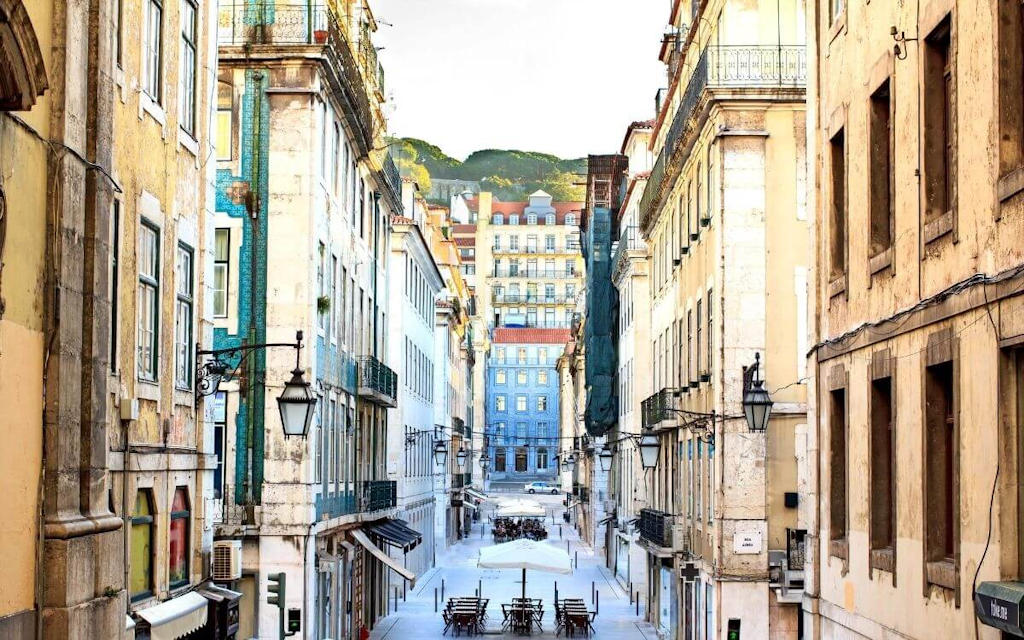Named after its esteemed architect, the Pombaline Baixa embodies a unique blend of elegance, functionality, and earthquake-resistant design. Under the guidance of the Marquis of Pombal, the district was meticulously rebuilt with a strict grid pattern, diverging from its former organic street plan.
A pioneer in earthquake-resistant construction, the Pombaline Baixa showcases innovative architectural elements that mitigate the impact of seismic activity. To ensure structural stability, models were subjected to simulated earthquakes by marching troops around them. The result was the development of the iconic Pombaline cage—a symmetrical wood-lattice framework that effectively distributes earthquake forces. Additionally, inter-terrace walls were constructed higher than roof timbers, minimizing the risk of fire contagion.
The significance of the Pombaline Baixa extends beyond its architectural prowess. It represents a watershed moment in urban planning, inspiring subsequent city reconstructions worldwide. In recognition of its historical and cultural value, the district was included on Portugal's "tentative list" of potential World Heritage Sites in 2004. Notably, the submission deemed the Pombaline Baixa superior to the planned areas in Edinburgh, Turin, and London, citing the district's unparalleled implementation of overall principles.
Today, wandering through the Pombaline Baixa is akin to stepping into a living museum of urban history. Its wide boulevards, symmetrical facades, and distinctive architectural features evoke a sense of awe and admiration. Visitors can marvel at the grandeur of Praça do Comércio, soak in the bustling atmosphere of Rua Augusta, and explore the intricate details of the district's buildings.
The Pombaline Baixa is not merely a reflection of past achievements; it remains a vibrant hub of activity in modern-day Lisbon. The district hums with the energy of fashionable shops, inviting cafés, and lively street performers. Whether you seek retail therapy, delectable culinary experiences, or a glimpse into Lisbon's rich cultural scene, Baixa will captivate your senses and leave an indelible impression.
Baixa is a treasure trove of architectural wonders. The iconic Praça do Comércio, with its majestic arch and yellow facades, stands as a symbol of Lisbon's maritime heritage. The Elevador de Santa Justa, an ornate wrought-iron elevator, offers panoramic views of the city. The Rossio Train Station, adorned with intricate tilework, transports visitors to another era. Every corner of Baixa boasts beautifully crafted buildings, charming squares, and decorative details that will mesmerize architecture enthusiasts.
Lisbon.vip Recommends
Baixa is a shopper's paradise, offering a wide range of options for retail therapy. The Rua Augusta, lined with international brands and local boutiques, invites you to indulge in fashion, accessories, and souvenirs. The traditional shops of Rua da Prata and Rua dos Fanqueiros provide a glimpse into Lisbon's commercial heritage, offering unique crafts and traditional products. Don't miss the opportunity to explore the historic markets, such as Mercado da Ribeira, where you can savor local flavors and discover fresh produce.
Baixa is a culinary haven, where traditional Portuguese cuisine blends with modern gastronomic trends. From cozy taverns serving petiscos (Portuguese tapas) to upscale restaurants offering gourmet experiences, Baixa caters to every palate. Indulge in the city's famous pastéis de nata (custard tarts) at iconic bakeries like Pastéis de Belém Bakery or savor fresh seafood dishes at local seafood restaurants. Baixa's vibrant dining scene promises a delightful journey for food enthusiasts.
Baixa district's allure lies in its fusion of history, culture, and vibrant city life. Whether you're strolling along its bustling avenues, admiring architectural masterpieces, immersing yourself in cultural treasures, or savoring delectable flavors, Baixa invites you to uncover the heart and soul of Lisbon. Embrace the charm and let Baixa unfold its captivating story as you embark on a remarkable journey through this remarkable district.
Map View



